This article was medically reviewed by Margareth Pierre-Louis, MD. Dr. Margareth Pierre-Louis is a board certified Dermatologist and Dermatopathologist, Physician Entrepreneur, and the Founder of Twin Cities Dermatology Center and Equation Skin Care in Minneapolis, Minnesota. Twin Cities Dermatology Center is a comprehensive dermatology clinic treating patients of all ages through clinical dermatology, cosmetic dermatology, and telemedicine. Equation Skin Care was created to provide the best in evidence-based, natural skin care products. Dr. Pierre-Louis earned a BS in Biology and an MBA from Duke University, an MD from the University of North Carolina at Chapel Hill, completed a residency in dermatology at the University of Minnesota, and completed a dermatopathology fellowship at Washington University in St Louis. Dr. Pierre-Louis is board certified in dermatology, cutaneous surgery, and dermatopathology by the American Boards of Dermatology and Pathology.
There are 12 references cited in this article, which can be found at the bottom of the page.
wikiHow marks an article as reader-approved once it receives enough positive feedback. In this case, several readers have written to tell us that this article was helpful to them, earning it our reader-approved status.
This article has been viewed 494,201 times.
Folliculitis, inflammation of the hair follicles that may develop into a bacterial or fungal infection, usually manifests as an itchy, painful, blistering and/or oozing rash surrounding one or more infected follicles.[1] Folliculitis can be caused by a variety of pathogens and can develop to various levels of severity and thus has many options for treatment. Whether you have a mild case or a full-blown skin emergency, this article will help you to get your skin looking its best in no time.
Steps
Treating Mild Folliculitis With Home Cures
-
1Wash the area periodically with antibacterial soap.[2] Most mild cases of folliculitis will eventually go away on their own. However, it's possible to speed this process by taking good care of the infected area. Twice a day, use a gentle antibacterial soap to cleanse the infected area.[3] Rinse and dry with a clean, dry washcloth or towel.
- Be sure to wash gently. Don't use a harsh soap or scrub roughly—these things can irritate the area, worsening any redness and inflammation.
- If you happen to have folliculitis on your face, choose an antibacterial soap that's specifically labeled for facial use. These are often gentler than run-of-the-mill antibacterial soaps.
-
2Try a simple salt-water compress. Warm compresses are rags or other absorbent materials soaked in warm liquid and held against the affected area to sooth irritation, promote drainage, and speed the healing process. Using salt water for your compress conveys an added antibacterial benefit (albeit a minor one). To create a salt-water compress, first dissolve a few spoonfuls of table salt in a cup or two of warm water. Soak a clean cotton ball or washcloth in the salt water and hold it gently against the affected area.[4]
- Apply twice a day—once in the morning, once at night.
Advertisement -
3Soak the area with warm water and aluminum acetate. Also known as Burow's solution, aluminum acetate is an astringent and antibacterial that is commonly used as a cheap over-the-counter treatment for a variety of minor skin conditions. Aluminum acetate can be used to kill folliculitis-causing bacteria and to reduce swelling in the infected area, lessening irritation and speeding recovery.[5]
- To use Burow's solution, simply dissolve one packet in the recommended amount of warm water. Soak a clean washcloth in the aluminum acetate solution, wring it out, and then apply to the affected area gently. Hold the washcloth there, intermittently wetting the cloth in the acetate solution as needed.
- When done, clean out the receptacle used for the aluminum acetate and run the washcloth under cool water. Launder the washcloth in hot water and dry thoroughly to kill any bacteria or fungi on the cloth.
-
4Treat with oatmeal. Believe it or not, oatmeal has long been used as an ingredient in home remedies for skin irritations due to its anti-itching properties. Try soaking your body (or just the affected area) in a homemade oatmeal bath or covering the area with an oatmeal lotion. Enjoy the gentle soothing sensation of your oatmeal cure, but, to avoid aggravating your folliculitis further, avoid prolonged exposure to even these mild solutions.
- As above, be sure to use a clean towel or washcloth to gently dry the affected area.
-
5Consider using a holistic cure like vinegar. Minor skin ailments like folliculitis are easy targets for a wide variety of holistic or "natural" cures. Some practitioners swear by these types of cures, though they are often not supported by the medical establishment. If you decide to use a holistic cure, use common sense—don't do anything that's likely to aggravate your folliculitis, introduce additional bacteria to the affected area, or prevent healing. One common holistic cure involving vinegar is described below (many others can be found with a simple online search).
- Make a solution of two parts warm water to one part white vinegar and mix thoroughly. Soak a clean washcloth in the vinegar solution, wring out, and apply to affected area. Hold the compress in place for 5-10 minutes, intermittently wetting the cloth in the vinegar solution as needed.
Treating Folliculitis With Medicinal Options
-
1Don't hesitate to consult a doctor for serious cases. Usually, folliculitis amounts to nothing more than a minor (albeit painful) irritation. However, like all infections, there is always the chance that it can develop into something more serious if left unchecked. If your folliculitis doesn't seem to be improving on its own, or you develop more serious symptoms like fever or severe swelling and irritation, schedule a doctor appointment as soon as possible.[6] It's much better to be safe than sorry—a timely doctor's visit can potentially save you lots of time and money in the long run.
- Usually, it's fine to see your "normal" doctor (i.e. your family/general practitioner). S/he may subsequently refer you to a dermatologist.
- It’s also worth consulting a doctor if your folliculitis is widespread.
-
2Use hydrocortisone to ease the itch and dull the pain. Hydrocortisone is a topical cream that treats skin irritation and relieves itchiness.[7] Try a 1% hydrocortisone cream 2 to 5 times a day (or as needed) to dull the pain. Apply the ointment directly to the affected area, gently rubbing it in with your fingers or a clean applicator. If using your hands, wash and dry your hands before applying to ointment to avoid transferring bacteria into the wound.
- Note that, although the hydrocortisone will dull the pain and inflammation, it will not actively fight the bacteria.
-
3Use over-the-counter painkillers/anti-inflammatories. To ease the pain and inflammation associated with folliculitis, you may want to use any one of the wide variety of over-the-counter medicines suitable for treating this condition. Cheap, common painkillers like acetaminophen and aspirin can help reduce mild cases of pain caused by folliculitis. Pain-reducing drugs with an anti-inflammatory function such as ibuprofen are also great choices, as these drugs will not only help with the pain but also temporarily ease the inflammation contributing to the pain.[8]
- Teenagers and children should not take aspirin without a doctor’s approval.
- Though most over-the-counter painkillers are very safe in small doses, heavy or prolonged use (10+ days) can sometimes lead to serious conditions like liver damage, so always follow the directions for safe use included with any medicines you purchase.
-
4Use antibiotics for serious cases. For cases of folliculitis that don't respond well to home cleaning and care, it may be necessary to treat the underlying bacterial infection with antibiotics.[9] Topical antibiotics are available at most pharmacies and grocery stores. More powerful oral antibiotics, however, require a doctor's prescription and are usually reserved for severe cases.
-
5Use antifungals for cases caused by fungus. As noted in the introduction, some cases of folliculitis are caused not by bacteria but by a fungus. In these cases, you'll want to use an antifungal medication to treat your condition. Antifungals are available in both oral and topical form. As with antibacterials, mild antifungals are often sold over-the-counter, while stronger medications may require a prescription.
- Your doctor can help determine the cause of your infection and proper treatment.
-
6Have any boils or carbuncles drained by medical professionals. In particularly severe cases, folliculitis can eventually contribute to painful, pus-filled blisters and carbuncles. If you have these boils, see a doctor. While draining these boils will speed the healing process and reduce eventual scarring,[10] you will not want to do so on your own. Attempting to lance and drain boils without the benefit of a sterile medical environment is a sure-fire way to develop a secondary infection.
Avoiding Folliculitis-Causing Behaviors
-
1Don't shave the area. Folliculitis is often brought on by irritation caused by shaving or unsanitary shaving practices.[11] If you have folliculitis on the skin under your beard or another area that you regularly shave, give that area a break from shaving. Persistent shaving can irritate the area and even spread the disease from one patch of hair to the next.[12]
- If you must shave, minimize the irritation as much as possible. Try to use an electric razor, rather than a handheld razor, and shave with the grain, rather than against the grain. Ensure your razor is clean every time you shave.
-
2Don't touch the area. Fingers and hands are among the most common vectors for bacteria. This means that they carry and transmit bacteria much like an airplane carries and transmits people. Although the area may itch, sting, or smart, it's important to resist the urge to itch or pick at the infected area. Treat the area like an off-limits area—wash your hands before touching it, and try to touch it only if you're applying soap, topical medicine, or a compress.
-
3Don't wear tight clothing. The mechanical action of clothing rubbing against the skin throughout the day can cause chafing and irritation which can potentially lead to infection. Additionally, skin infections can also result if any clothing prevents air from reaching the skin. If you are prone to folliculitis, ensure that your clothing is soft and loose-fitting to minimize any potential irritation.[13]
- Also try to prevent the clothing around any areas affected by folliculitis from becoming wet. Wet clothing is likely to cling to the skin, increasing the risk of irritation. If you sweat or get your clothes wet, change them as soon as possible to prevent an infection.[14]
-
4Don't expose your skin to irritating substances. Everyone's skin is different—some people are susceptible to rashes and breakouts, while others are resilient. If you have folliculitis (or are prone to it), try to avoid coming into contact with any substances that you know to cause you irritation (especially substances you're allergic to), as the irritation can lead to an infection or sidetrack the healing process of an existing infection.
- You may, for instance, want to avoid certain cosmetics, oils, lotions, rubs, and so on.
-
5Don't bathe or swim in untreated water. Folliculitis is colloquially called "hot tub rash" for good reason. Swimming, bathing, or otherwise submerging yourself in a pool or hot tub that is improperly maintained is a common way to receive a folliculitis infection. Certain folliculitis-causing bacteria, like Pseudomonas aeruginosa, are easily transmitted via dirty water.[15] If you're prone to folliculitis, you'll want to take care to ensure that you don't allow yourself to come into contact with stagnant, untreated water.
-
6Don't rely too heavily on topical steroid creams. Certain medical treatments, when used for long periods of time, can lead to an increased risk for folliculitis. Topical steroid ointments like hydrocortisone, in particular, can contribute to folliculitis infections.[16] Paradoxically, topical hydrocortisone is itself a common treatment for mild folliculitis. If you're using hydrocortisone to treat your folliculitis, schedule a doctor's appointment if you don't notice any improvement—procrastinating and over-relying on steroid creams can cause the infection to worsen.[17]
-
7Don't let existing wounds get infected. Hair follicles can become inflamed and infected if a nearby infection is irritated or allowed to spread. Thus, you'll want to ensure you treat any skin infections promptly and professionally. Don't let infections get out of hand—they are much easier to treat when they're small and localized than after they spread.
Expert Q&A
Did you know you can get expert answers for this article?
Unlock expert answers by supporting wikiHow
-
QuestionWhat can I do to avoid getting folliculitis?
 Margareth Pierre-Louis, MDDr. Margareth Pierre-Louis is a board certified Dermatologist and Dermatopathologist, Physician Entrepreneur, and the Founder of Twin Cities Dermatology Center and Equation Skin Care in Minneapolis, Minnesota. Twin Cities Dermatology Center is a comprehensive dermatology clinic treating patients of all ages through clinical dermatology, cosmetic dermatology, and telemedicine. Equation Skin Care was created to provide the best in evidence-based, natural skin care products. Dr. Pierre-Louis earned a BS in Biology and an MBA from Duke University, an MD from the University of North Carolina at Chapel Hill, completed a residency in dermatology at the University of Minnesota, and completed a dermatopathology fellowship at Washington University in St Louis. Dr. Pierre-Louis is board certified in dermatology, cutaneous surgery, and dermatopathology by the American Boards of Dermatology and Pathology.
Margareth Pierre-Louis, MDDr. Margareth Pierre-Louis is a board certified Dermatologist and Dermatopathologist, Physician Entrepreneur, and the Founder of Twin Cities Dermatology Center and Equation Skin Care in Minneapolis, Minnesota. Twin Cities Dermatology Center is a comprehensive dermatology clinic treating patients of all ages through clinical dermatology, cosmetic dermatology, and telemedicine. Equation Skin Care was created to provide the best in evidence-based, natural skin care products. Dr. Pierre-Louis earned a BS in Biology and an MBA from Duke University, an MD from the University of North Carolina at Chapel Hill, completed a residency in dermatology at the University of Minnesota, and completed a dermatopathology fellowship at Washington University in St Louis. Dr. Pierre-Louis is board certified in dermatology, cutaneous surgery, and dermatopathology by the American Boards of Dermatology and Pathology.
Board Certified Dermatologist The best way to avoid folliculitis is to keep your skin clean and dry and shave properly. If you work out or otherwise get your clothes wet, change out of them as soon as you can. When you shave, always use shaving cream and apply a moisturizer afterwards to prevent your skin from becoming irritated.
The best way to avoid folliculitis is to keep your skin clean and dry and shave properly. If you work out or otherwise get your clothes wet, change out of them as soon as you can. When you shave, always use shaving cream and apply a moisturizer afterwards to prevent your skin from becoming irritated. -
QuestionShould I stop shaving if I have folliculitis?
 Margareth Pierre-Louis, MDDr. Margareth Pierre-Louis is a board certified Dermatologist and Dermatopathologist, Physician Entrepreneur, and the Founder of Twin Cities Dermatology Center and Equation Skin Care in Minneapolis, Minnesota. Twin Cities Dermatology Center is a comprehensive dermatology clinic treating patients of all ages through clinical dermatology, cosmetic dermatology, and telemedicine. Equation Skin Care was created to provide the best in evidence-based, natural skin care products. Dr. Pierre-Louis earned a BS in Biology and an MBA from Duke University, an MD from the University of North Carolina at Chapel Hill, completed a residency in dermatology at the University of Minnesota, and completed a dermatopathology fellowship at Washington University in St Louis. Dr. Pierre-Louis is board certified in dermatology, cutaneous surgery, and dermatopathology by the American Boards of Dermatology and Pathology.
Margareth Pierre-Louis, MDDr. Margareth Pierre-Louis is a board certified Dermatologist and Dermatopathologist, Physician Entrepreneur, and the Founder of Twin Cities Dermatology Center and Equation Skin Care in Minneapolis, Minnesota. Twin Cities Dermatology Center is a comprehensive dermatology clinic treating patients of all ages through clinical dermatology, cosmetic dermatology, and telemedicine. Equation Skin Care was created to provide the best in evidence-based, natural skin care products. Dr. Pierre-Louis earned a BS in Biology and an MBA from Duke University, an MD from the University of North Carolina at Chapel Hill, completed a residency in dermatology at the University of Minnesota, and completed a dermatopathology fellowship at Washington University in St Louis. Dr. Pierre-Louis is board certified in dermatology, cutaneous surgery, and dermatopathology by the American Boards of Dermatology and Pathology.
Board Certified Dermatologist
-
QuestionMy scalp is red with hair loss. Is this folliculitis? What can I do about it?
 Jennifer Boidy, RNJennifer Boidy is a Registered Nurse in Maryland. She received her Associate of Science in Nursing from Carroll Community College in 2012.
Jennifer Boidy, RNJennifer Boidy is a Registered Nurse in Maryland. She received her Associate of Science in Nursing from Carroll Community College in 2012.
Registered Nurse
References
- ↑ Margareth Pierre-Louis, MD. Board Certified Dermatologist. Expert Interview. 15 May 2020.
- ↑ Margareth Pierre-Louis, MD. Board Certified Dermatologist. Expert Interview. 15 May 2020.
- ↑ http://emedicine.medscape.com/article/1070456-treatment
- ↑ http://www.mayoclinic.org/diseases-conditions/folliculitis/basics/lifestyle-home-remedies/con-20025909
- ↑ http://www.newsmax.com/FastFeatures/Folliculitis-treatment-scalp-folliculitis/2011/02/10/id/385574
- ↑ Margareth Pierre-Louis, MD. Board Certified Dermatologist. Expert Interview. 15 May 2020.
- ↑ http://www.nlm.nih.gov/medlineplus/druginfo/meds/a682793.html
- ↑ https://www.drugs.com/acetaminophen.html
- ↑ Margareth Pierre-Louis, MD. Board Certified Dermatologist. Expert Interview. 15 May 2020.
- ↑ http://www.mayoclinic.org/diseases-conditions/folliculitis/basics/treatment/con-20025909
- ↑ Margareth Pierre-Louis, MD. Board Certified Dermatologist. Expert Interview. 15 May 2020.
- ↑ http://www.mayoclinic.org/diseases-conditions/folliculitis/basics/prevention/con-20025909
- ↑ https://www.drugs.com/cg/folliculitis.html
- ↑ Margareth Pierre-Louis, MD. Board Certified Dermatologist. Expert Interview. 15 May 2020.
- ↑ http://www.cdc.gov/healthywater/swimming/rwi/illnesses/hot-tub-rash.html
- ↑ http://www.aafp.org/afp/2009/0115/p135.html
- ↑ https://patient.info/skin-conditions/skin-rashes/folliculitis
About This Article
If you have a mild case of folliculitis, you may be able to clear it up by gently washing the area twice a day with antibacterial soap. To relieve irritation and further speed up the healing process, put a warm saltwater compress on the affected area once in the morning and again at night. For extra germ-killing power, make a warm water compress with aluminum acetate. You can also use an oatmeal bath or lotion to relieve itching, but take care not to use it for more than a few minutes to prevent further irritation. Keep reading for more advice from our Medical co-author, including how to get medical care for severe folliculitis!

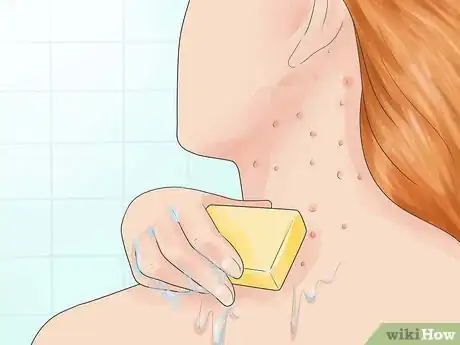
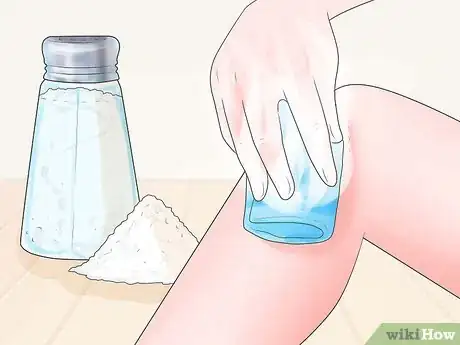
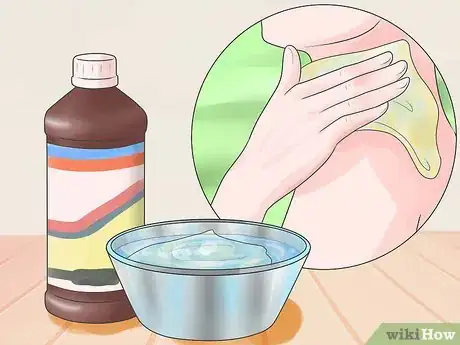
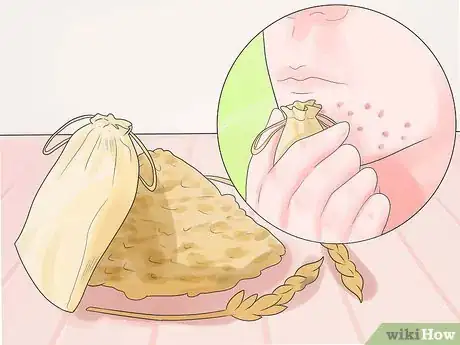
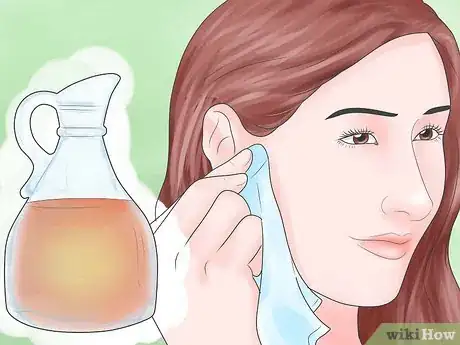

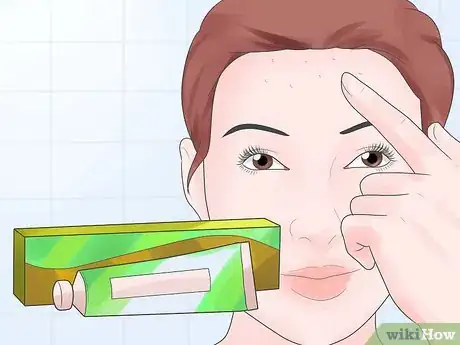
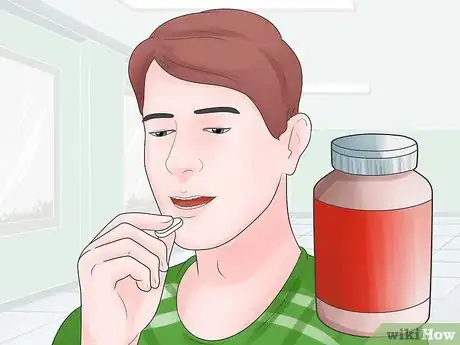
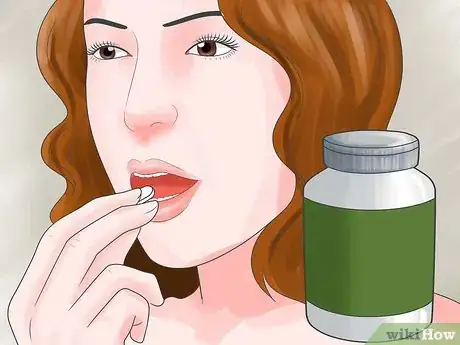
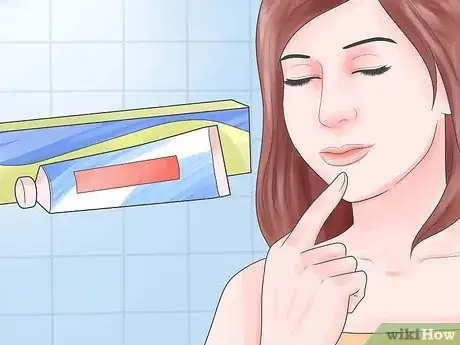

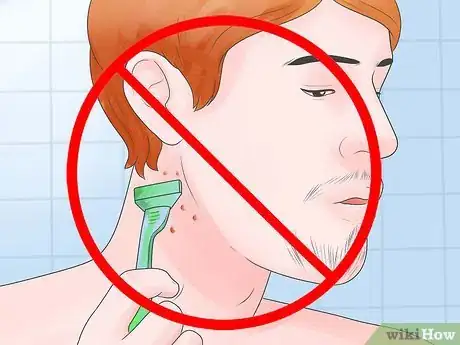
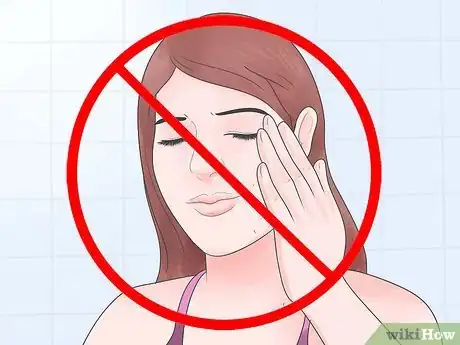
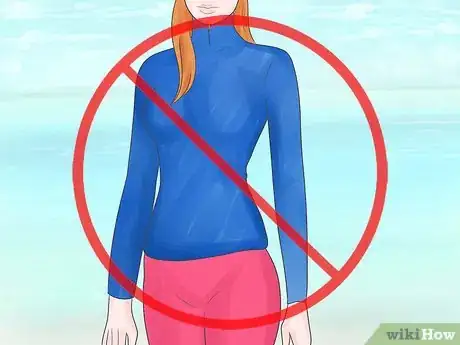
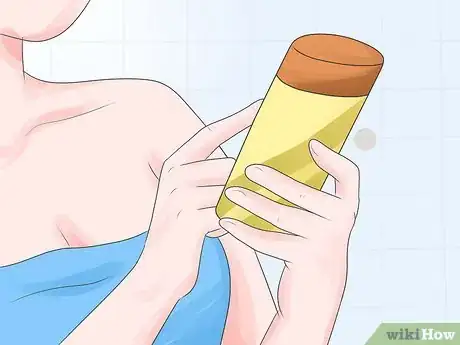

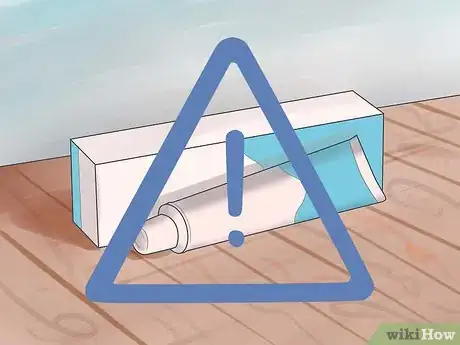
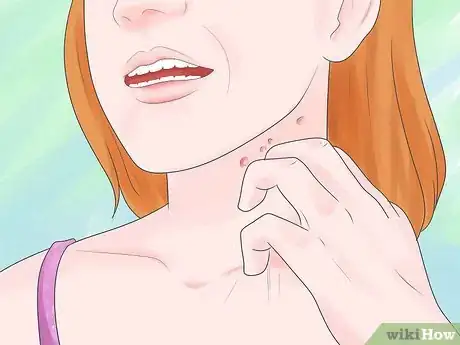


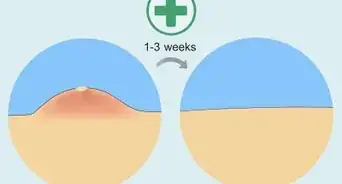

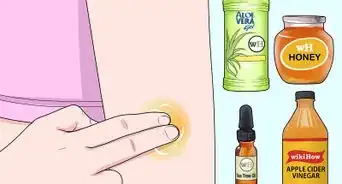
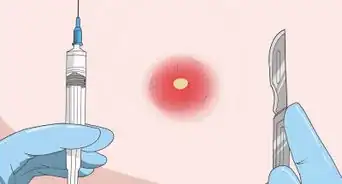
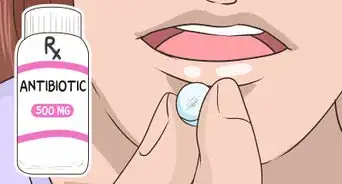
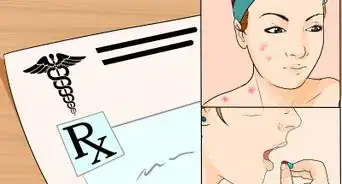





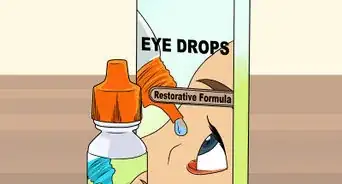












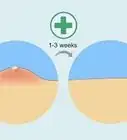
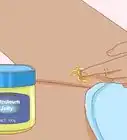



































Medical Disclaimer
The content of this article is not intended to be a substitute for professional medical advice, examination, diagnosis, or treatment. You should always contact your doctor or other qualified healthcare professional before starting, changing, or stopping any kind of health treatment.
Read More...